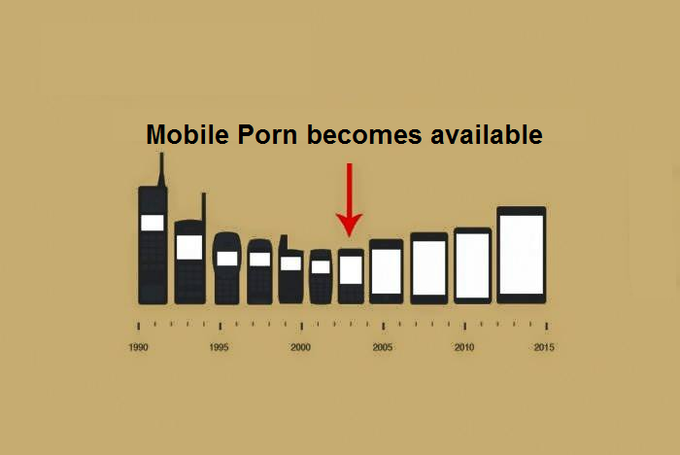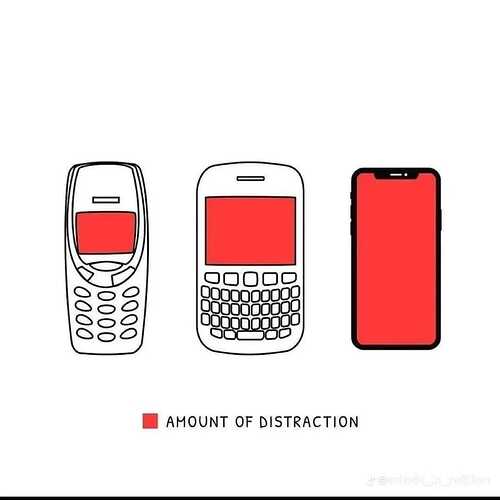A friend of mine sent me this today. I think the RED space speaks volumes!
Literally the definition of ‘a picture is worth a thousand words.’
The attention economy is a ruthless game where the prize is your focus, and digital devices are the cunning players which distract you at every turn, leaving you with a split personality and a fractured attention span.
Do you agree? Let’s discuss.
5 Likes
On a less serious note:

On a more serious note: I think it’s rather about content on the screen than the screen itself.
I started my elementary school with a Nokia 5510 which was a great tool to play snake and receive calls on birthdays and ended high school with a smartphone, which - at some point - contributed more to my learning than some teachers did.
Not to mention learning B1/B2 Ukrainian or very basic Hebrew without picking up a single book.
So while I agree that the attention economy is a brutal time to live in, I have some gratitude for a larger screen.
5 Likes
@kirkmahoneyphd This is very alarming. However, it’s not surprising. I think I posted this 60min Australia video on this forum last year. It’s about something in the same vein:
There is a reason that TikTok in China is a completely different app. There is a special “teenager mode” on Douyin (the Chinese TikTok name) which restricts the amount of time that users under the age of 14 can spend on the app. This mode also limits the types of content that they can see.
This is why mindful tech use is so important. There was a study which came out in Poland a couple of weeks back that discusses how screen time affects young kids. I wrote about it on our blog:
https://mudita.com/community/blog/how-screen-time-could-harm-your-preschoolers-development/
4 Likes
It’s important to keep in mind that within a span of 15 years at most, a small fraction of these teenagers will occupy governmental positions, influencing what is deemed beneficial and making decisions on these matters.
2 Likes
@urszula and @roberto – I bought Gloria Mark’s book Attention Span after seeing it cited in the ‘TikTok Brain’ article at Breitbart.com.
The following excerpt from page 38 made me think of the Mudita Pure:
When we use our devices, we’re in front of an interface that challenges us to keep our attention on our goals. It is not only the visual cues like browser tabs, social media icons, and notifications on your computer and phone that represent a gateway to information–it is also the idea that there is a vast reservoir of information at hand that you can access. You might not welcome the proximity of this excess information when you’re trying to work on a single task, such as that overdue monthly report, and so you force yourself to resist the temptation to switch to any of these other information sources. But even if you succeed in not switching to another task or distraction, your executive function is still working constantly to inhibit that behavior.
THAT explains why the Mudita Pure and other minimalist cellphones (such as those from Sunbeam Wireless) can be so liberating! They free the user’s executive function from working constantly to inhibit switching to another task or distraction.
3 Likes
Our attention is finite. Our brain can only handle a certain amount of stimuli at one time, otherwise we become distracted. However, the whole point of the digital age is to keep us as distracted as possible. It’s the attention economy.
1 Like
Thank you, @kirkmahoneyphd .
The author’s mention of “cues” holds significant importance for me because they are usually misunderstood as signals. A signal is anything that intentionally makes us perform a behavior, and a cue is anything that unintentionally makes us perform a behavior. Elements such as browser tabs, icons, and other forms of digital clutter fall within the category of cues, which has significant power in becoming signals and conditioning our behaviors in the future.
1 Like
That RED space does hit differently!
2 Likes


